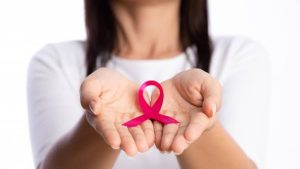Breast Cancer in India: Understanding the Challenge, Symptoms, and Treatment

Breast cancer remains a major public health concern in India, impacting a significant number of women each year. It is currently the most prevalent cancer among Indian women, with its incidence rising steadily over time. This article provides an overview of the current breast cancer landscape in India, including its causes, symptoms, early detection methods, and treatment options.
The prevalence of breast cancer is increasing across the country, making it the leading cancer affecting Indian women. According to the Indian Council of Medical Research (ICMR), more than 180,000 new breast cancer cases were reported in India in 2020 alone. Accounting for 14% of all cancers in Indian women, the growing incidence is driven by a combination of factors such as lifestyle changes, environmental exposure, and genetic predisposition.
According to Dr. Sujata Kar, a renowned Obstetrician and Gynecologist based in Bhubaneswar, here’s what you should know about the causes, symptoms, and treatment of breast cancer:
Causes of Breast Cancer
- Genetic Factors: A family history of breast cancer significantly increases the risk, indicating a genetic link in some cases.
- Hormonal Factors: Early onset of menstruation, delayed menopause, and prolonged use of hormonal contraceptives can heighten the risk.
- Lifestyle Factors: Sedentary lifestyle, excessive alcohol consumption, and obesity contribute to the development of breast cancer.
- Environmental Factors: Exposure to radiation and environmental pollutants also plays a role.
Common Symptoms to Watch For
- Lump or Mass: The most recognizable symptom is a painless lump or mass in the breast.
- Changes in Breast Appearance: Alterations in breast size, shape, skin texture, or the appearance of nipple discharge or inversion should be examined.
- Pain: Although not always linked to cancer, persistent breast pain should not be ignored.
- Lymph Node Enlargement: Swelling in the lymph nodes around the armpit or collarbone may indicate the cancer has spread.
Importance of Early Detection
Early detection greatly improves treatment outcomes. Common methods include:
- Breast Self-Exams: Women aged 20–39 are encouraged to perform monthly self-exams to identify any unusual changes.
- Clinical Breast Examinations: Women between 40–49 years should undergo regular check-ups and ultrasounds every 1–2 years.
- Mammograms: These X-ray screenings can detect tumors that may not be felt. Mammograms are recommended every two years, especially for women at higher risk.
- Biopsy: If abnormalities are found, a biopsy confirms whether the tissue is cancerous.
Treatment Options
Treatment strategies are based on the type and stage of the cancer, along with the patient’s overall health. Common options include:
- Surgery: The tumor is removed surgically, which may involve a lumpectomy or a mastectomy (removal of the entire breast).
- Radiation Therapy: Often used post-surgery to destroy any remaining cancer cells and prevent recurrence.
- Chemotherapy: Cancer-fighting drugs are used to kill or inhibit the growth of cancer cells, either before or after surgery.
- Hormone Therapy: For hormone receptor-positive cancers, this therapy blocks the hormones that fuel cancer growth.
- Targeted Therapy: These drugs specifically target cancer cell mechanisms and are often combined with other treatments.
- Immunotherapy: Boosts the body’s immune system to help it identify and destroy cancer cells.
Conclusion
Breast cancer is a multifaceted disease with a range of risk factors and treatment options. Regular screenings and early diagnosis can significantly improve the likelihood of successful treatment. Being aware of personal risk factors and taking proactive steps—such as routine check-ups and self-exams—can go a long way in maintaining breast health. With continuous advancements in medical science, breast cancer treatment and diagnosis are becoming more effective, offering hope to those affected by the disease.
